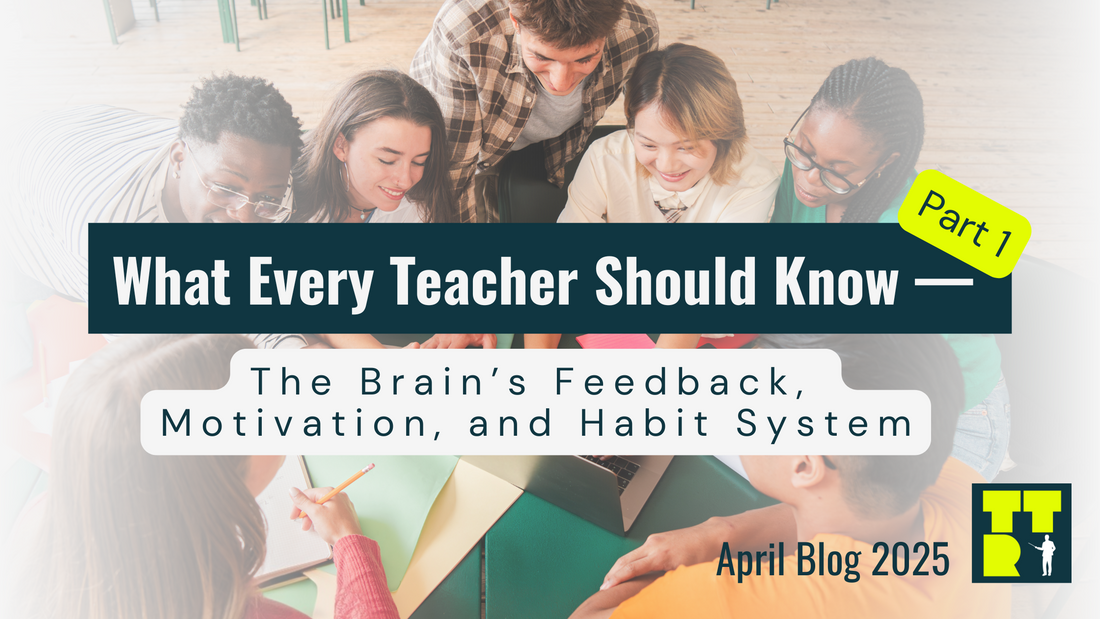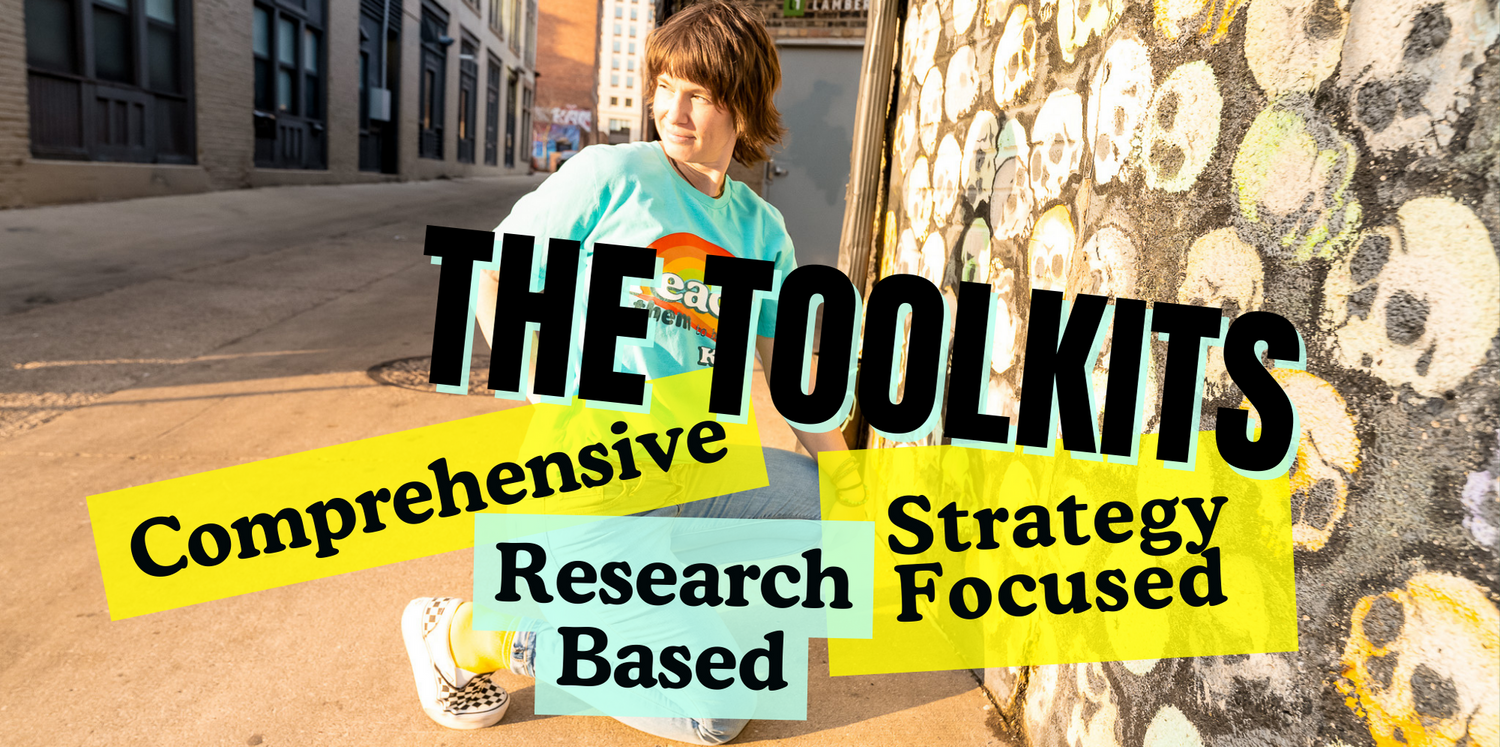
Part 1: What Every Teacher Should Know — The Brain’s Feedback, Motivation, and Habit System
Share
Understanding how one small part of the brain helps students learn, stay motivated, and regulate emotions — and what that means for your classroom.
For 100’s of strategies that are brain based and all of the knowledge on how to use them check out the Neurodivergent Toolkit HERE.
There’s a part of your students’ brains working quietly in the background every time they get feedback, practice a skill, or feel motivated to keep going. It’s called the striatum — and it might be the most important part of the brain you’ve never heard of. This blog post breaks down how it influences learning, emotion, and behavior in the classroom — and what teachers can do to support it. Part 1 is all about feedback, memory, and motivation. Part 2? We’re talking movement, rhythm, and brain-based routines.
The Brain Wants To Learn
There is a world where the brain actually wants to learn — not just because it’s supposed to, but because it feels good to get things right, practice new skills, and feel competent. That world isn’t a fantasy classroom or some ideal school. It’s biology. And the brain’s striatum is one of the key systems behind it.
The striatum is involved every time a student repeats a task, responds to feedback, learns something through trial and error, or feels excited by a reward. But here’s what most teachers don’t know: the striatum isn’t just about movement or habits. It actually plays a huge role in motivation, memory, emotion regulation, and even how we respond to praise and correction.
If you’ve ever wondered:
-
Why some students bounce back from mistakes and others shut down...
-
Why routines matter so much for learning…
-
Or how to make feedback actually stick...
...this post is for you.
What Is the Striatum?
The striatum is a cluster of brain structures located deep in the center of the brain. It’s part of the basal ganglia, and its three main parts are the caudate nucleus, putamen, and nucleus accumbens.
Even though it doesn’t get as much attention as the prefrontal cortex or amygdala, the striatum is quietly working every time a student:
-
Gets feedback
-
Repeats a skill until it becomes automatic
-
Feels motivated (or unmotivated)
-
Gets rewarded or punished
-
Regulates behavior through routines
-
Switches focus from one task to another
In short? It’s the bridge between what we intend to do and what we actually do. It helps decide which actions are worth repeating based on outcomes. It’s the ultimate “learn from experience” system.
🧠 What Does the Striatum Do?
Let’s break it down into the key areas that matter most in your classroom:
1. Feedback & Learning from Mistakes
The dorsal head of the caudate nucleus is especially sensitive to feedback. When a student makes a choice and gets feedback — whether positive or negative — this part of the brain lights up and helps the brain adjust.
✅ If feedback is immediate, the striatum strengthens the connection: “That worked!”
🚫 If feedback is delayed or vague, the connection weakens: “I’m not sure what worked, so I won’t repeat it.”
Why it matters in school:
If a student gets timely, clear feedback (“Nice job using evidence in your answer”), their brain learns to repeat that skill. But if they complete an assignment and hear nothing for days, the feedback loop doesn’t close, and the learning doesn’t stick.
2. Repetition and Habit Formation (Procedural Memory)
The striatum helps turn repeated tasks into automatic routines. Think of:
-
A student who practices math facts until they’re fluent
-
A class that transitions smoothly thanks to a practiced routine
-
A student who finally remembers to raise their hand before blurting out
That’s the striatum building procedural memory — memory based on doing, not memorizing.
Why it matters in school:
Students often struggle not because they can’t learn, but because the behavior hasn’t been practiced enough to become automatic. The striatum thrives on consistency and repetition. To make this easier get the Neurodivergent Toolkit
HERE
3. Motivation and Reward
The Nucleus Accumbens, part of the striatum, is often called the brain’s “reward center.” When students feel pleasure, pride, or satisfaction, this area gets a dopamine boost — reinforcing the behavior that caused it.
So when a student:
-
Solves a problem and feels proud
-
Gets specific praise for using a new strategy
…the striatum registers it as “That was worth it — let’s do it again.”
Why it matters in school:
Motivation isn’t just about willpower. It’s chemistry. Students are more likely to repeat behaviors that give them a dopamine reward. If they don’t get that boost — from success, encouragement, or enjoyment — the behavior fades fast.
For creative ways to build student competency and motivation check out the Neurodivergent Toolkit HERE
4. Focus, Attention, and Task Switching
The striatum helps students filter distractions, stay on task, and switch between activities. It works with the prefrontal cortex to manage executive function.
Why it matters in school:
When a student is struggling to get started, switch from math to reading, or ignore distractions, their striatum might need support. Building routines, using cues, and creating structure can make task-switching easier.
5. Emotion Regulation and Behavior
The striatum connects to the emotional centers of the brain and helps link emotions with action. It can reinforce both helpful and unhelpful habits based on how those behaviors feel emotionally.
Why it matters in school:
If calling out gets attention and feels rewarding, the striatum will reinforce it. But if a student learns that taking a breath when they’re overwhelmed leads to praise or relief, that will be reinforced instead.
What Can Teachers Do to Support Striatum Function?
You don’t need to be a neuroscientist to teach in a brain-friendly way. You just need to understand how to leverage feedback, reward, and repetition in ways that work with — not against — the striatum.
Here’s how:
✔️ 1. Use Immediate, Specific Feedback
✅ Instead of: “Nice work.”
✅ Try: “You explained your thinking clearly when you described the water cycle. That’s what scientists do.”
Why it works: Specific, immediate feedback helps the striatum connect behavior to outcome. The student knows exactly what to repeat.
✔️ 2. Focus on Progress, Not Perfection
✅ Instead of: “You still didn’t get it.”
✅ Try: “You used a better strategy this time. Want to try it again with a new example?”
Why it works: When students experience success after struggle, the striatum gets a reward signal. It teaches persistence — not avoidance.
✔️ 3. Reinforce Effort and Strategy
Praise students for how they succeeded, not just that they did.
✅ “I noticed you reread the paragraph when it didn’t make sense — that helped you figure it out.”
Why it works: The striatum reinforces behaviors that led to success. Help students recognize what they did right.
✔️ 4. Build Routines That Become Automatic
Use consistent transitions, expectations, and classroom procedures.
✅ “When I ring the bell, we close our books and get ready to move.”
✅ “We start writing after the second stretch break every day.”
Why it works: Repetition strengthens the striatum’s role in automating behavior. Over time, students don’t have to think — they just do it.
✔️ 5. Create Opportunities for Positive Interactions
Not everything needs to be gamified or stickered — students need positive emotional signals when they succeed.
✅ Peer shout-outs
✅ Goal tracking
✅ Positive phone calls home
✅ “That felt good” moments after solving a tough problem
Why it works: These positive interactions generate dopamine, which tells the striatum, “Let’s do that again.”
🎯 Big Takeaways for Teachers
-
The striatum helps students learn from experience, form habits, and stay motivated.
-
It thrives on immediate feedback, positive reinforcement, and repetition.
-
When teachers understand how the brain rewards behavior, they can set up systems that naturally reinforce what they want to see more of.
If you’ve ever felt frustrated that students “don’t remember” what you taught or “keep doing the same thing,” it might not be about compliance — it might be about brain systems that need more support.
🪘 What’s Next: Movement, Rhythm, and the Brain
In Part 2, we’ll dig into how rhythmic activities like clapping, dancing, and drumming boost striatum function. We’ll look at:
-
Why movement is a powerful tool for learning
-
How rhythm-based routines can improve focus, regulation, and memory
-
Simple ways to bring it into your classroom without needing a music degree
For 100’s of strategies that work with the brain check out the Neurodivergent Toolkit HERE.







